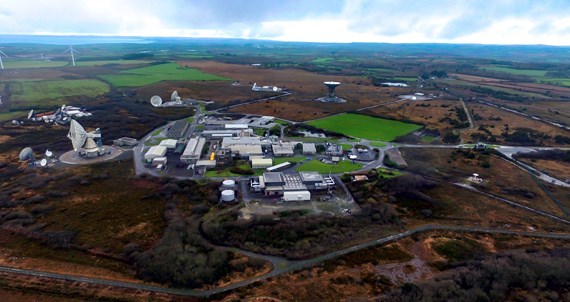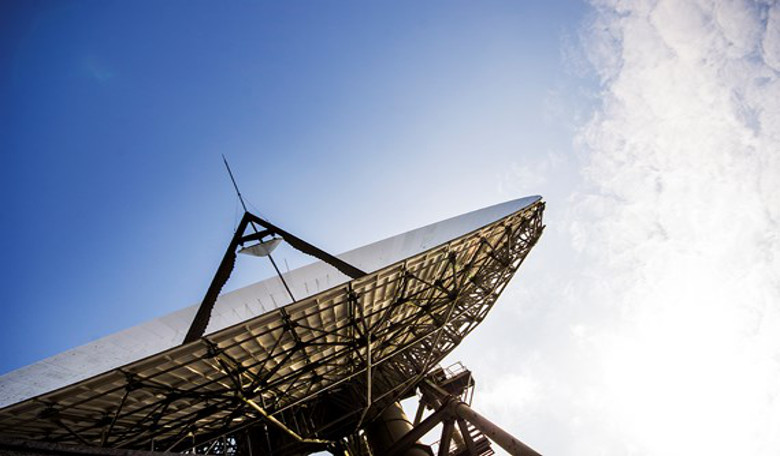A large radio-communication site located in Cornwall, UK that was once used to beam iconic images to TV viewers of events such as the Apollo 11 Moon landing, will help create the world’s first commercial deep-space communications station, capable of tracking future missions to the Moon and beyond.
At present, if you are planning on flying a robotic or even human mission beyond Earth, then the one indispensable item your going to need is a deep-space tracking dish to communicate with your craft.
If you don’t want to take-up the pricey option of building your own from scratch, then the only other way forward is to ask a big space agency to borrow their deep-space antennas.
Now, however, after a sizeable investment from the UK’s Cornwall & Isles of Scilly Local Enterprise Partnership and a later, smaller investment from ESA, Goonhilly Earth Station located on the Lizard peninsula in Cornwall, England, will be upgraded to enable it to provide deep-space tracking and satellite communication services on a commercial basis.
Established in 1962, Goonhilly was at one time the largest satellite station in the world, with over 60 dishes of varying size. Goonhilly was the largest ground station for the INMARSAT network and assisted with the birth of the Internet when networks on the East and West coasts of the U.S were linked to Europe.
With a vision to create a multi-faceted space hub, Goonhilly’s 32 m-diameter GHY-6 antenna will be upgraded to meet the high-end performance and technology requirements needed by ESA, NASA and private space exploration companies for deep-space communications.
Goonhilly CEO Ian Jones said: “We already have a great deal of interest in using the upgraded antenna from our international customer base. This includes space agencies, such as ESA, as well as some of the new private space exploration companies.”
“By the middle of the next decade, ESA’s deep-space communication needs for supporting today’s missions, like ExoMars, and upcoming spacecraft, like Juice, is expected to exceed our present capacity by around half,” says ESA’s Pier Bargellini, responsible for network operations.
With new spacecraft such as BepiColombo due for launch this year and the agency’s Solar Orbiter, Euclid and Cheops programs currently in development, ESA need to be able to extend their present deep-sky dishes to cope with the influx of data expected from these missions.
“Once the station upgrade work is complete, in about 24 months, Goonhilly will be able to complement ESA’s own stations, and provide deep-space tracking for the Agency’s missions,” added Bargellini.
“Upgrading Goonhilly and building up a commercial capability to support future exploration missions is good for ESA and good for European science and industry,” says Rolf Densing, ESA’s Director of Operations. “It’s also excellent value for European taxpayers.”
 Aerial view of Goonhilly Earth Station in Cornwall, UK. Image: GES Ltd
Aerial view of Goonhilly Earth Station in Cornwall, UK. Image: GES Ltd











